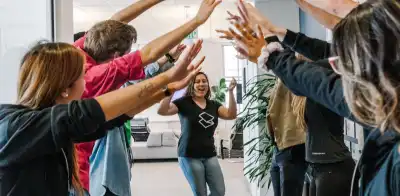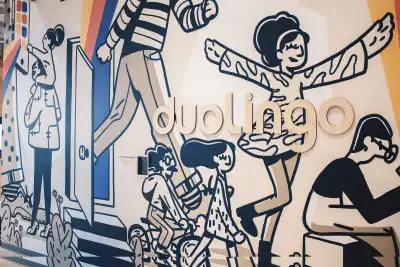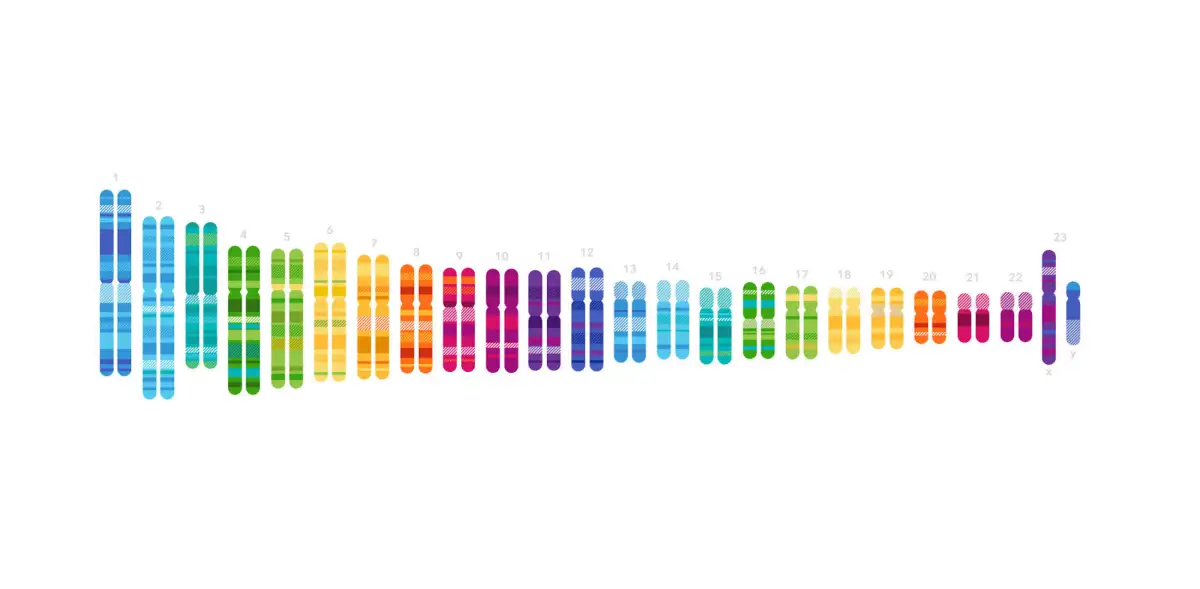Summary
Allbirds transformed the footwear industry with its sustainability mission, using OKRs to achieve it. Discover how their culture of openness fosters groundbreaking product development.
This piece is Part Two of a two-part series featuring Allbirds.
Part One: Anchoring OKRs to Your Mission
When they started Allbirds in March of 2016, former New Zealand soccer player Tim Brown and biotech engineer Joey Zwillinger had zero experience in the footwear business. Yet within three years, they were able to sell a million pairs of shoes and achieve a $1 billion valuation.
The founders attribute such unforeseen success to setting clear Objectives that transcend typical revenue and profit goals as well as hiring people with diverse backgrounds — engineers and scientists, designers and programmers, marketers and finance professionals — who shared an affinity for sustainability that’s at the core of the company’s mission. Or as Brown puts it, “We set out to make better stuff in a better way.”
Early on, the company embraced the management system of Objectives and Key Results (OKRs) as a way to build a culture of innovation that would serve their bold sustainability goals. “Their desire to use OKRs to build culture is very powerful,” says Measure What Matters author John Doerr. “It makes Allbirds not just a shoe company but an environmental company.”
Allbirds calls their system KIWIs, for keep improving with intent, a nod to Brown’s New Zealand heritage. “We call them KIWIs, but they’re OKRs,” notes Zwillinger.
One top level Objective, for instance, involves a carbon-neutral promise to customers. That means any time you buy anything from Allbirds, it is 100% carbon-emission neutral on the planet. Key Results to support that Objective involve tracking emissions targets across everything — from the supply chain to manufacturing to shipping to retail operations.

OKRs for product innovation
But perhaps the most challenging task that the founders put to the test with OKRs was product innovation. For any company, the process of innovation is notoriously hard to predict, control, and measure. Since it’s so difficult to mandate creativity, many business leaders attribute innovation to serendipity, or they look to acquire innovations, rather than build them in-house.
Allbirds needed to diffuse this paradox of innovation — that if you try to control it, you might kill it. “My belief was that you can’t be creative and you can’t stretch outside the box if you’re boxed into a process,” says Zwillinger.
But perhaps the process itself was the problem.
Zwillinger is passionate about process design, and he keeps a quote by the classic management guru W. Edwards Deming on his phone: “If you can’t describe what you’re doing as a process, you don’t know what you’re doing.”
To Zwillinger, the core of managing innovation involves the process of “stage-gating,” which is giving new ideas, projects, and materials the go-ahead to move ahead in defined stages, from conception to final production. “We created an innovation process that has stage-gates and then has OKRs around it making sure that we push a certain number of products through a particular stage-gate,” he says.
The theory behind such stage-gating is that the company funds a certain number of projects to reach the goal of, say, launching a major new materials science innovation every year or two. “We know we need to have a few things in the pipeline to deliver on that, and they need to reach the standards that we need to hold for that. And so we can create a KIWI that hits on that innovation process and ensures we are in the right place.”
Reinventing the flip-flop
At Allbirds, product innovation includes making discoveries in the field of materials science. Whereas Allbirds fashions its sneakers from natural Merino wool — one of New Zealand’s signature exports — most shoes are made of petroleum byproducts. As a result, the footwear and fashion industry dumps about 4,000 million metric tons of carbon into the atmosphere each year — about eight percent of the total carbon impact worldwide.
Since such pollution was deemed unacceptable, Allbirds began looking for an alternative material for a new line of flip-flops, or as New Zealanders call them, “jandals.”
The jandals project took more than two years. “We set out to find a better way to make it, and it’s been really hard,” says Brown. “It’s not about more technology, it’s about going back to nature and finding a more sustainable material.” The project involved advancing different materials and ideas through stage-gates, with hurdles for sustainability, economics, as well as the practicalities of manufacturing at scale.
The winning material turned out to be Brazilian sugar cane, which grows quickly, relies only on rainwater, and sucks carbon out of the atmosphere. “It’s renewable, resourceful, and it leads to a sustainable shoe sole,” says Brown. The resulting material, which it called SweetFoam, also contours to your feet in a way that delivers “bouncy comfort.”
In the summer of 2018, Allbirds launched its Sugar Zeffers, retailing for $35 per pair. Unlike most flip-flops, which are made from ethylene-vinyl acetate (EVA), Sugar Zeffers are environmentally friendly at every stage of the product lifecycle.

A culture with no walls or barriers
Innovation at Allbirds also involves cultivating the right kind of culture at its headquarters, located in the historic Telegraph Hill neighborhood of San Francisco. Walking in, the first thing you might notice is that there are no partitions or cubicles within the space for its 150 employees (another 100+ people work in its retail locations).
“I love that there are no walls here at Allbirds,” says senior copywriter Ryan Overhiser. “Physically speaking, it’s totally open-office, and metaphorically speaking, there’s no hierarchy. If something is on my mind and I want to run it by Tim and Joey, then I have that opportunity. I don’t have to walk on eggshells.”
In order for everyone to work towards the same top-level KIWIs, the product design team and the development team works closely with the sustainability team. As engineer Winston Kim says, “Our teams are nice and cozy, just like our shoes.”
There’s a corner of the office where the designers congregate by windows and plants. “We have brand designers, digital designers, and retail designers there,” says junior designer Amanda Knapp. “We’re all doing our own work, but we like to give each other updates so we can get other’s perspectives.”

Everything is turned into a process
Even stuff that goes beyond normal work is tracked and measured, including “lunch and learns,” which are regularly-scheduled noontime presentations in which employees present what they have learned in their discipline to the rest of the company.
Then, every day at 4 p.m., there is the ‘40 at 4,’ a social event that starts with everyone doing 40 push-ups. A different employee leads it each time, with that person sharing something that’s important to them, whether its soccer skills, Indian dancing, or speed-walking around the block.
“I taught meditation and did a crystal sound bath,” says Lucia Litman, digital content and experiences manager. “It’s a chance to get to learn about everyone else.”
Zwillinger says that this cross-disciplinary culture at Allbirds is tied together by design thinking, and his principle that everything can be turned into a simple, memorable process that can be measured and tracked. “We have a design-centered culture that’s not just about product, but about process design as well.”
As Allbirds scales and joins the ranks of the world’s largest shoe companies, it will need to set and meet tougher and tougher goals. “Now the challenge is how to grow sustainably,” says sustainability analyst Hanna Kajimura. “That involves everything from choosing the right supply chain partners to keeping sustainability at the core of how we do everything, as we double, triple, and quadruple in size.
Or as John Doerr says, “You have to keep setting more and more audacious goals.”
This piece is Part Two of a two-part series featuring Allbirds.
Part One: Anchoring OKRs to Your Mission




